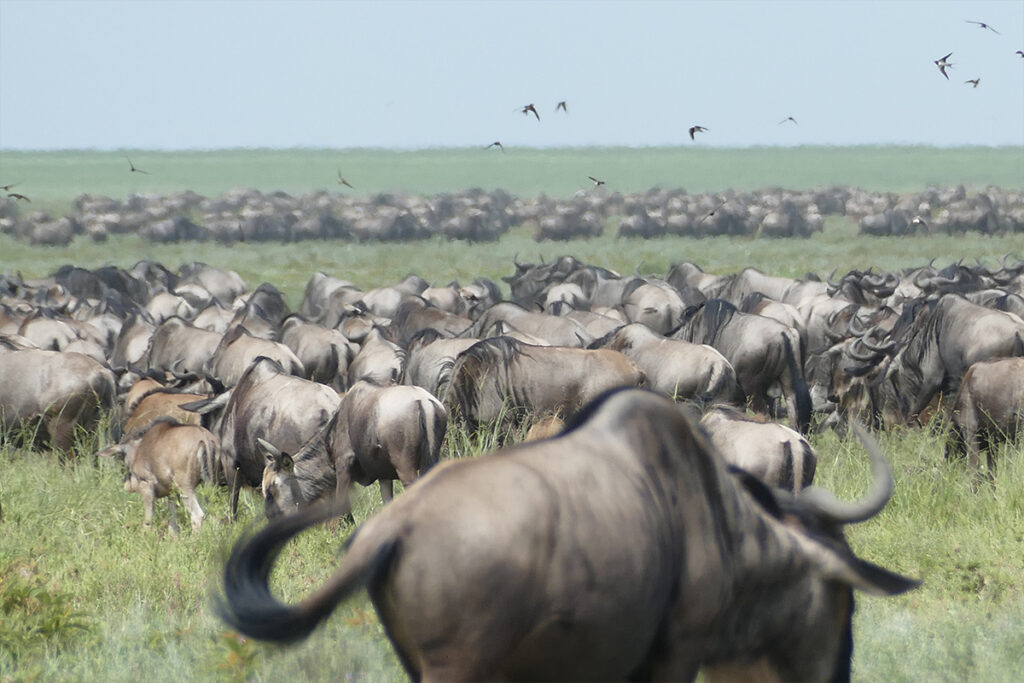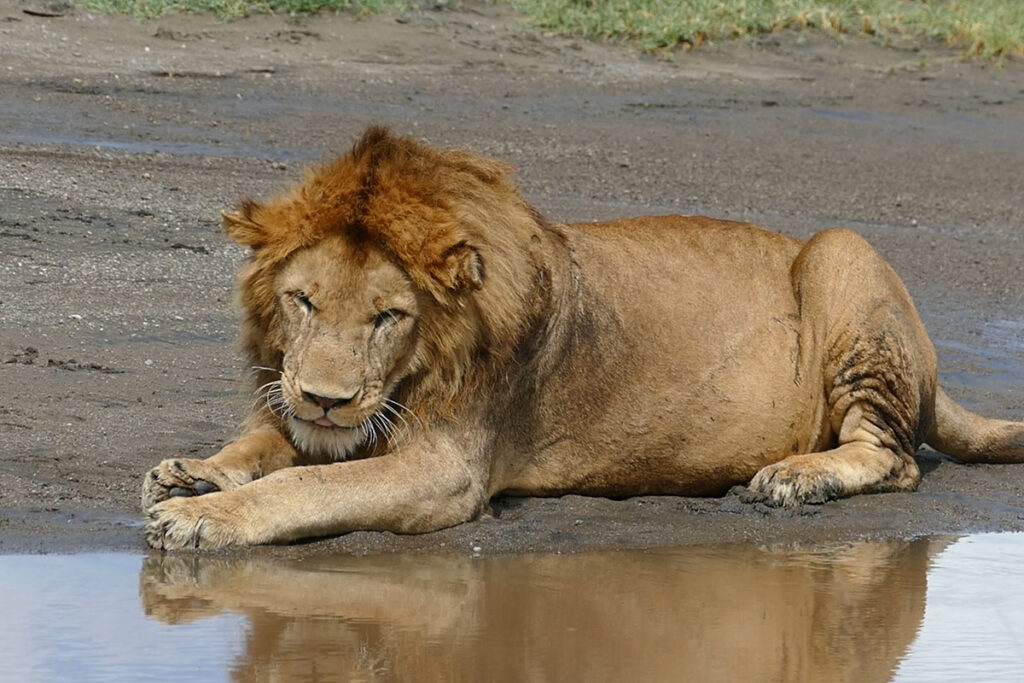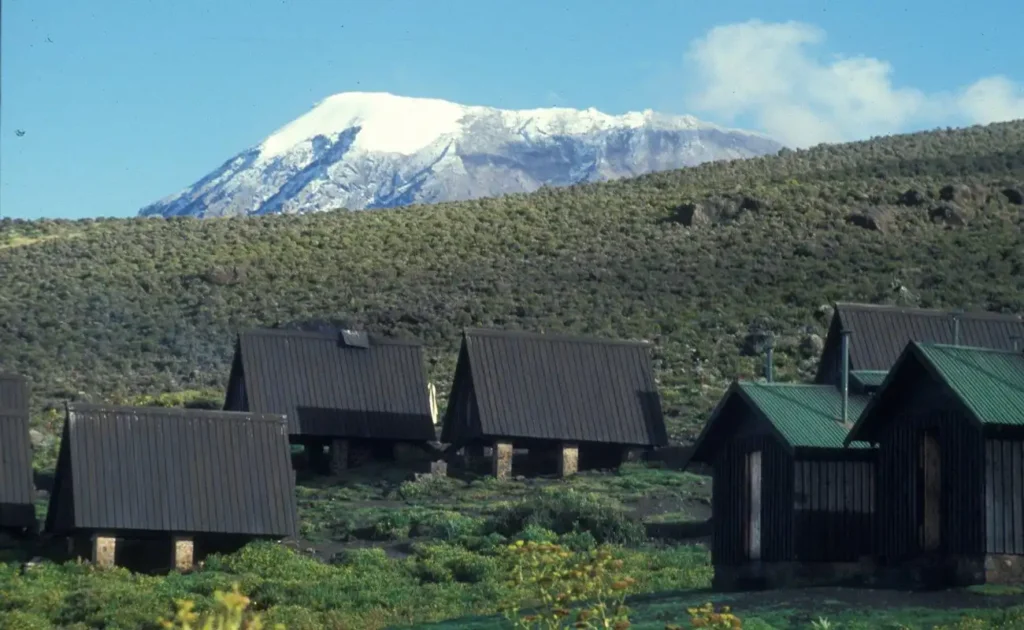Each year, over 250,000 wildebeest calves are born in a three-week span in the Serengeti. This natural spectacle draws wildlife enthusiasts and researchers alike, eager to witness the synchronized birth timing that benefits both mother and calf. The phenomenon is not merely a sight to behold but an evolutionary marvel to study.
The calving season typically begins in February, coinciding with the rainy season, ensuring an abundance of fresh grass. This timing is crucial as it significantly boosts calf survival rates, with the majority of births occurring between midday. Remarkably, a newborn wildebeest can stand and run within minutes of being born, reducing its vulnerability to predation.

Calving Season Serengeti: See Newborn Wildebeest in Action
The calving season in the Serengeti is a wondrous display of nature. Every year, around the start of February, thousands of wildebeest give birth almost simultaneously. The scene is both chaotic and beautiful, with calves learning to walk within minutes. This rapid bonding is crucial as predators are always nearby. Witnessing this process in action is like watching a live nature documentary.
Amazing synchronization is one of nature’s strategies for survival. Wildebeest choose this time for calving to overwhelm predators with sheer numbers. With plenty of calves being born, the odds of each individual surviving increase. This clever tactic helps maintain the wildebeest population. Understanding these survival strategies makes observing the event even more fascinating.
Newborn wildebeest must adapt quickly to life in the wild. They are remarkably resilient, learning to stand and run shortly after birth. This quick adaptation reduces their vulnerability to predators. In a matter of days, these calves can keep up with the migrating herd. The first few days are critical, but nature equips them with the necessary instincts.
Visiting the Serengeti during calving season offers a rare glimpse into a dynamic ecosystem. The best viewing spots include areas with lush grass, attracting both prey and predators. Visitors often witness dramatic interactions between wildlife. Besides wildebeest, other animals like zebras and gazelles also give birth around this time. The abundance of life creates an unforgettable safari experience.
The Phenomenon of Wildebeest Calving
The wildebeest calving season is one of nature’s great wonders. Each year, the Serengeti becomes a theater for this remarkable event. Thousands of female wildebeest give birth within a tight time frame. This synchronization helps calves avoid predators like lions and hyenas. The sight of numerous newborns taking their first steps is both awe-inspiring and a testament to nature’s timing.
One of the biggest factors driving this phenomenon is survival. By giving birth simultaneously, predators are overwhelmed. They cannot possibly hunt all the calves at once, ensuring that many survive. This strategy, often called “predator swamping,” tips the scales in favor of the wildebeest. It’s a masterful play of numbers and timing.
Watching the newborns adapt is nothing short of fascinating. Within minutes of birth, a calf is up on its feet. This quick start is crucial as it needs to keep pace with the herd. The young wildebeest must learn to negotiate a landscape filled with dangers. Their swift learning and agility speak volumes about their survival instincts.
The entire phenomenon also impacts the ecosystem. The calving season attracts many other species, creating a bustling environment. Predators are drawn to the area, knowing there will be plentiful prey. This influx of wildlife creates a unique opportunity for observing various interactions. For wildlife enthusiasts, it’s like a grand, natural show unfolding before their eyes.
The Synchronization of Wildebeest Births
The synchronization of wildebeest births is a captivating natural event. In just a few weeks, over half a million calves are born in the Serengeti. This happens during the rainy season, providing abundant food and water. Such timing is no accident; it’s a survival strategy. By having births occur simultaneously, the calves have a better chance of evading predators.
This phenomenon is known as “predator swamping.” With so many calves born at once, predators can’t possibly catch them all. Wildebeest moms deliberately plan for this swamping effect. The more calves there are, the less likely an individual calf will be hunted. This ensures a higher survival rate for the herd.
The process also relies on environmental cues. Factors like food availability and weather conditions play crucial roles. When the rains begin, it’s a signal for wildebeest to start calving. This ensures that the newborns have plenty of resources to grow strong. Nature’s timing shows a delicate balance between survival and sustenance.
The wildlife dynamics during this period create amazing opportunities for observation. Visitors to the Serengeti can witness the high-stakes drama unfold. Predators follow the herds, knowing that there’s a feast to be had. Meanwhile, the wildebeest mothers are vigilant, never straying far from their calves. This naturally orchestrated event offers unmatched insight into the circle of life.
Surviving in the Wild: Traits of Newborn Wildebeest
Newborn wildebeest are equipped with incredible traits for survival. Within minutes of birth, they struggle to their feet. This rapid mobility is essential in predator-filled environments. Their first steps may be wobbly, but they quickly gain strength. By following their mothers, they significantly improve their chances of survival.
One remarkable trait is their ability to run within an hour. This agility helps them evade predators. Newborns must be ready to move with the herd almost immediately. Staying behind could mean falling victim to lions or hyenas. This speed is a vital survival skill.
Another key trait is their instinctual need to bond with their mother. The calf learns to recognize her by sight, sound, and smell. This bond is critical for finding her in the chaos of the herd. The mother safeguards her calf, guiding it through the perilous landscape. Their strong connection bolsters the calf’s survival odds.
Newborn wildebeest also have a keen sense of direction. They quickly learn to follow the herd’s movements. This herding behavior is essential for protection. Being in a group reduces the chance of individual predation. Safety in numbers is a survival tactic that newborns instinctively follow.
Wildebeest mothers display impressive parenting skills. They are always vigilant, ready to defend their young. The mother’s constant attention ensures the calf’s safety during its vulnerable early days. Within a few weeks, the calf gains enough strength to keep pace with the migrating herd. This nurturing instinct helps the next generation thrive.
Newborns must also adapt to various environmental challenges. They endure harsh weather conditions and lack of constant food supply. Remarkably, they thrive in these tough environments. Adaptability is a crucial trait for their survival in the wild. Their resilience is a testament to nature’s incredible design.
Witnessing the Event: Best Time and Places
The wildebeest calving season provides an extraordinary experience for wildlife enthusiasts. The best time to witness this phenomenon is between late January and early March. During these months, the Serengeti becomes a lively scene of births and migrations. Timing your visit is crucial to catch the peak of the event. Watching thousands of calves take their first steps is unforgettable.
Several locations within the Serengeti offer prime viewing opportunities. The Ndutu region is especially popular due to its open plains. This area allows easy sightings of both wildebeest and their predators. It’s a great spot for photographers looking for dramatic action shots. Many visitors choose this location for its accessibility and abundance of wildlife.
Accommodations range from basic campsites to luxury lodges. Staying closer to the migration routes enhances the safari experience. Visitors often opt for mobile camps that move with the herds. This flexibility offers front-row seats to the unfolding drama. Booking in advance ensures availability during this busy season.
Safari tours are available to guide visitors through the best spots. Expert guides offer insight into animal behaviors and local ecology. They provide safety tips and enhance the overall experience. A guided tour ensures you don’t miss key moments or locations. Arranging for a knowledgeable guide is strongly recommended.
Witnessing the wildebeest calving season is a unique opportunity. It showcases the raw and captivating spectacles of nature. The Serengeti transforms into an arena of life and survival. Experiencing this firsthand leaves a lasting impression. It’s a remarkable display of the circle of life in action.
Environmental Impact on Calving Season
The environment plays a crucial role in shaping the calving season. Rainfall patterns are especially important as they determine food availability. When rains are plentiful, the grasslands flourish, providing abundant nourishment. This abundance is vital for lactating mothers and growing calves. However, unpredictable climate changes can disrupt this delicate balance.
Changes in temperature and precipitation levels can affect the timing of calving. If the rains are delayed or insufficient, it impacts the health of the herd. Water shortages or droughts can lead to reduced calf survival rates. Newborns require ample nutrients to develop properly. These environmental factors underscore the importance of maintaining ecosystem stability.
The calving season also influences the behaviors of other animals in the area. Predators like lions and hyenas rely on the season for food. If conditions are unfavorable, predator populations may decrease. This affects the entire food chain, creating a ripple effect. Keeping the environment healthy supports the dynamic balance of the Serengeti ecosystem.
Human activities also leave their mark on the environment. Agriculture and settlement expansion can encroach on migratory routes. Such disruptions affect where and when wildebeest can give birth. Conservation efforts aim to protect these critical natural spaces. Safeguarding the environment ensures the continuation of this amazing natural event.
Tourism, too, plays a significant role, both positive and negative. While it raises awareness and funds for conservation, too much foot traffic can disturb wildlife. Sustainable tourism practices are essential to minimize environmental impact. Striking a balance between tourism and conservation is key to preserving the calving season. Responsible policies help protect the future of this magnificent spectacle.
Key Takeaways
- Calving season occurs between January and March in the Serengeti.
- Thousands of wildebeest give birth almost simultaneously.
- This synchronized birthing helps protect calves from predators.
- Newborn wildebeest can stand and run within minutes of birth.
- The event showcases an amazing survival strategy in the wild.



